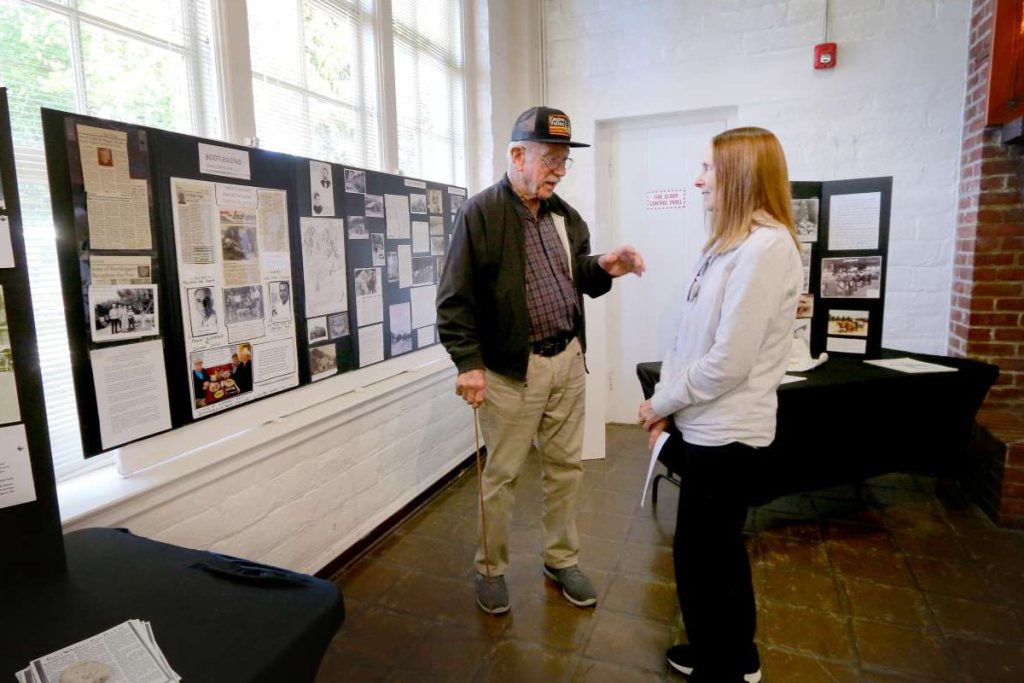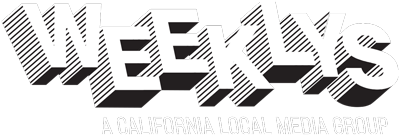At less than a year old and looking for a permanent home, the Castro Valley Museum of History offers a comprehensive view of the town’s early years through its extensive collection of photos, documents and historical objects.
The backbone of the museum owes its existence to the efforts of lifelong Castro Valley resident and museum board member Lucille Lorge’s 50 years of collecting.
“I was never really interested in history,” says Lorge, “until I found out that my great-grandfather [Henry Thomford] had the first business here, ‘The Exchange,’ in Castro Valley in 1880. It was a way station where people travelling from the valley would stop on their way to Hayward. He had a big water trough where the animals could get a drink. When I found that out, I became interested in history. Then, I married a man [Ray Lorge] who had a hatchery here in the 1940s. His family had been there since 1920, so that added to my historical curiosity.”
Now others can benefit from that curiosity. “What you see in there is my collection,” says Lorge. “I just kept everything at home until I met Randy Vanderbilt about eight years ago. He suggested putting them on panels. Eventually we had 22 panels of photos and documents. The people at the performing arts center found out and said, ‘Come over, let’s do a show.’ We put all the panels up and Randy had some wonderful movies of the boulevard from the 1950s.”

Lorge adds, “Two years later, the Adobe Art Center said, ‘bring the collection here.’”
The current exhibit features all 22 panels, comprising several hundred black and white photos, newspaper clippings and other ephemera. Vanderbilt’s films are the source material for a video presentation off the main exhibit floor.
“The original owner of the Chabot Theater, Jerry Toler, used to go around taking movies with a professional 35mm movie camera,” says board president Randy Vanderbilt, whose own family’s plumbing business makes appearances in the museum’s collection. “Through his son, who lived on my street, I came into possession of the footage. I had it digitized and we pulled out some of the best material and used that to make a 15-minute loop.”
Board member and attorney Jim Phillips—son of one of Castro Valley’s first attorneys, George W. Phillips—headed the process of turning the museum into a 501(c)3 non-profit. His grandfather, Rev. George W. Phillips, moved his family to Castro Valley in 1922 to grow persimmons, grapes, apples and the area’s first pomegranates. He was well known for religious broadcasting and as the founder of the Bay Area’s second oldest radio station, 510 AM, now KSFO.
This year, the museum is partnering with Castro Valley Unified School District to “bring local history directly to the classroom.” It is launching a program to engage third-grade students with lessons, stories and artifacts that highlight the people, places and events that have shaped Castro Valley history. The programs will be held at the Adobe Art Center next to Castro Valley Elementary School.
The museum highlights lesser-known aspects of the region’s history. The history of the area owes much to the involvement of several well-known families who feature prominently among the displays. The Jensen, Parson and Rowell families are just a few of those whose trades and activities contributed to the prosperous economy of Castro Valley in the last century.
Castro Valley was once considered by many to be the chicken capital of the world, famous for its white leghorn chickens. Local hatcheries provided both eggs and live chickens to destinations around the East Bay and beyond, but the post-war suburban boom saw most of the farms transformed into residential neighborhoods.
Bootlegging was not unknown to Castro Valley. Museum volunteer Al Bronzini likes to show visitors the exhibit featuring pictures of his father, uncles and their families enjoying the life such a lucrative trade provided.
The original owner of the sprawling 41-square-mile rancho upon which Castro Valley sits was Don Guillermo Castro. He was a soldier, surveyor, rancher, magistrate and father of seven, but his weakness was gambling. In February of 1864, the land was sold for $400,000 to Faxon Dean Atherton—namesake of the present-day town across the bay.
In addition to Lorge and Philips, the board includes Robert Souza, Brian Anthony Morrison, Dennis Waespi, Susan Holm and Melissa Mahar. All of them have distinguished records of accomplishments and leadership too numerous to mention, but their bios are available on the museum website, which features many links to articles, interviews, videos and a growing online archive.
The museum is only open on select days; check the website for upcoming events.
Castro Valley Museum of History
Adobe Art Center
20395 San Miguel Ave., Castro Valley
510.881.6735
castrovalleyhistorymuseum.com




